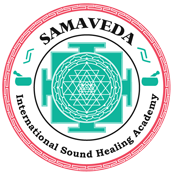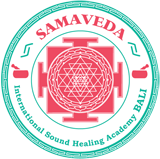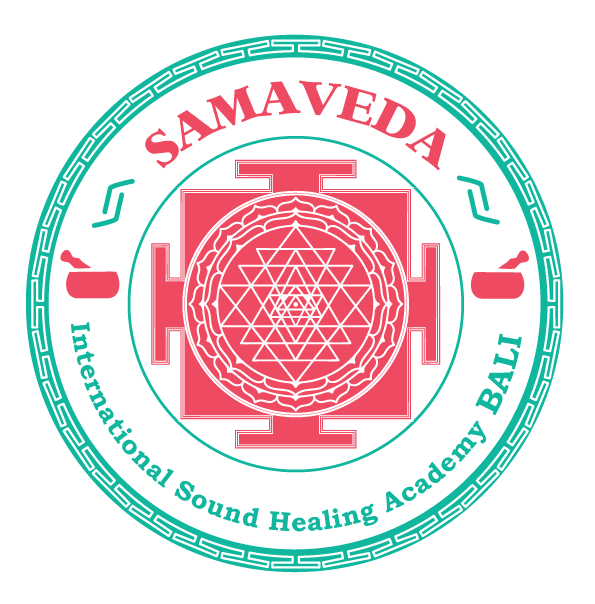A Guide to Music Genres Used in Ecstatic Dance Sessions Understanding the Music of Ecstatic Dance: Genres and Styles
Post Summary
This article from Samaveda International Sound Healing Academy explores the Types of Music in Ecstatic Dance, highlighting how rhythms and soundscapes guide movement, emotion, and transformation. It explains how genres like tribal drumming, electronic beats, world fusion, ambient soundscapes, and live acoustic performances each create unique energetic shifts. The post discusses how specific musical patterns support grounding, emotional release, heart-opening, and ecstatic flow during dance sessions. It also emphasizes the role of sound healers and facilitators in curating intentional playlists to elevate participants’ journeys. With its professional and inspiring tone, the article encourages readers to understand music as a powerful tool for awakening body, mind, and spirit.
Samaveda International Sound Healing Academy, Goa India: 11 years, 1,700+ certified healers, expert training, 200+ singing bowls, sound-baths in 100+ countries, personalized career consultations.
Discover the different types of music played in ecstatic dance sessions. Learn about various music genres and their impact on the ecstatic dance experience.
This article explores the various types of music played in ecstatic dance sessions, highlighting the genres and styles that are commonly used. It explains how different music selections can impact the dance experience, enhancing the emotional and physical journey of participants. The guide provides insights into popular music choices, the process of music selection, and the role of music in facilitating ecstatic dance. Whether you are a DJ, facilitator, or participant, this guide offers valuable information on the musical landscape of ecstatic dance.
what are different types of music played in Ecstatic Dance
Ecstatic dance incorporates a wide variety of music genres to create a diverse and dynamic experience. Here are some different types of music commonly played in ecstatic dance:
- World Music: Traditional and contemporary music from different cultures around the world, including African, Latin, Middle Eastern, Indian, and indigenous music.
- Electronic: Various subgenres of electronic music such as ambient, downtempo, house, techno, trance, drum and bass, and dubstep, known for their rhythmic and electronic soundscapes.
- Tribal and Ethnic Beats: Drumming rhythms and percussive music inspired by tribal and indigenous traditions, often creating a primal and energetic atmosphere.
- Ambient and New Age: Soothing and atmospheric music characterized by ethereal sounds, calming melodies, and a sense of tranquility.
- Classical and Orchestral: Orchestral compositions, symphonies, and classical pieces that evoke emotions and create a grand and epic feel.
- Jazz and Blues: Lively and improvisational music genres featuring expressive instrumentation, soulful vocals, and rhythmic grooves.
- Meditative and Healing: Serene and calming music designed to induce relaxation, meditation, and inner exploration, often incorporating nature sounds, singing bowls, and chimes.
- Funk and Soul: Groovy and energetic music characterized by rhythmic basslines, infectious beats, and soulful vocals.
- Rock and Alternative: Upbeat and energetic rock, indie, and alternative music that can inspire movement, release, and a sense of freedom.
- Folk and Acoustic: Acoustic-driven music rooted in folk traditions, often featuring acoustic guitars, melodic storytelling, and heartfelt lyrics.
- Pop and Dance: Popular and upbeat music from various genres, including pop, dance, and chart-topping hits, which can create a vibrant and uplifting atmosphere.
- Chillout and Lounge: Chill, laid-back music with downtempo beats and atmospheric elements, perfect for introspection, relaxation, and contemplation.
- Soundscapes and Experimental: Experimental and avant-garde music that pushes boundaries, explores sonic textures, and creates immersive and unique auditory experiences.
- Mantra and Devotional: Sacred chants, mantras, and devotional music from different spiritual traditions, designed to inspire devotion, connection, and transcendence.
- Live and Improvised Music: Live performances and improvisational music played by bands, ensembles, or solo artists, often incorporating a mix of genres and creating a vibrant and spontaneous atmosphere.
short description of each of the above-mentioned music genres commonly played in ecstatic dance:
- World Music: World music encompasses a rich variety of traditional and contemporary musical styles from cultures around the globe, offering a diverse range of rhythms, melodies, and instruments that transport dancers to different parts of the world.
- Electronic: Electronic music is characterized by its synthesized sounds, rhythmic beats, and often futuristic or experimental elements. It encompasses a broad spectrum of subgenres, each with its own distinct style and energy, allowing dancers to explore a wide range of sonic landscapes.
- Tribal and Ethnic Beats: Tribal and ethnic beats draw inspiration from indigenous traditions and percussion-driven music, utilizing rhythmic patterns, drums, and cultural instruments to create an earthy and primal atmosphere that connects dancers to their primal instincts.
- Ambient and New Age: Ambient and New Age music is known for its atmospheric and ethereal qualities, featuring soothing melodies, gentle rhythms, and textural soundscapes that create a serene and introspective ambiance, allowing dancers to explore inner realms of consciousness.
- Classical and Orchestral: Classical and orchestral music brings the grandeur and emotional depth of symphonies, compositions, and classical pieces to the dance floor. It evokes a sense of drama, elegance, and epic storytelling, inviting dancers to connect with the power and beauty of classical music.
- Jazz and Blues: Jazz and blues music is characterized by its improvisational nature, soulful melodies, and infectious rhythms. It encourages dancers to express themselves through fluid movements, syncopated steps, and emotional interpretation, infusing the dance floor with energy and passion.
- Meditative and Healing: Meditative and healing music is designed to induce a state of relaxation, tranquility, and introspection. It often incorporates gentle melodies, soothing sounds of nature, and ambient textures, creating a nurturing space for dancers to connect with their breath, body, and inner peace.
- Funk and Soul: Funk and soul music is infused with infectious grooves, rhythmic basslines, and soulful vocals. It inspires dancers to let loose, move their bodies, and express themselves with funky footwork and joyful energy, creating a vibrant and uplifting atmosphere on the dance floor.
- Rock and Alternative: Rock and alternative music encompass a wide range of styles and subgenres, characterized by their energetic guitar-driven sound, catchy hooks, and powerful vocals. It encourages dancers to embrace their inner rockstar, releasing pent-up energy, and embracing the raw power of rock on the dance floor.
- Folk and Acoustic: Folk and acoustic music is rooted in storytelling, featuring heartfelt lyrics, acoustic guitars, and melodic simplicity. It invites dancers to connect with the emotions and narratives expressed in the music, encouraging organic and authentic movements that reflect the introspective and contemplative nature of folk traditions.
- Pop and Dance: Pop and dance music are known for their catchy melodies, infectious beats, and vibrant energy. They inspire dancers to let go, move their bodies, and connect with the upbeat and joyful spirit of popular hits, creating an atmosphere of celebration and positivity on the dance floor.
- Chillout and Lounge: Chillout and lounge music sets a laid-back and relaxed atmosphere, featuring downtempo beats, atmospheric textures, and soothing melodies. It provides a space for dancers to unwind, reflect, and engage in introspective movement, allowing for moments of calm and contemplation during the ecstatic dance experience.
- Soundscapes and Experimental: Soundscapes and experimental music push the boundaries of traditional musical structures, exploring unconventional sounds, textures, and compositions. It offers a unique and immersive sonic experience that challenges dancers to move and respond to the unexpected, creating an atmosphere of exploration and artistic expression.
- Mantra and Devotional: Mantra and devotional music involves sacred chants, repetitive mantras, and devotional songs from various spiritual traditions. It invokes a sense of reverence, transcendence, and connection to the divine, inspiring dancers to express devotion, gratitude, and surrender through their movements.
- Live and Improvised Music: Live and improvised music features performances by bands, ensembles, or solo artists who create music in the moment, often incorporating elements from multiple genres. It offers a dynamic and spontaneous experience on the dance floor, inviting dancers to respond and interact with the live musicians, resulting in a unique and energizing atmosphere.
- What types of music are typically played in ecstatic dance sessions?
- How do different music genres impact ecstatic dance experiences?
- What are the most popular music styles used in ecstatic dance?
- How is music selected for ecstatic dance sessions?
- What makes music effective for ecstatic dance facilitation?
Types of Music in Ecstatic Dance – Key Takeaways & Essential Highlights from Samaveda International Sound Healing Academy
-
Explores diverse musical genres shaping ecstatic dance, from tribal rhythms to electronic and ambient soundscapes.
-
Highlights music’s role in grounding, emotional release, and deepening meditative dance states.
-
Explains how facilitators curate intentional playlists to guide energy and participant transformation.
-
Shows the integration of live acoustic elements with electronic sound for immersive dance journeys.
-
Encourages sound healers to recognize music as a sacred tool for mind-body-spirit awakening.
Explore Our Upcoming Sound Healing Teacher Trainings Course In India
Sound Healing Teacher Training in India | Multi-Instrument Sound Healing Training in Goa, India
Unlock Your Potential as a Sound Healer with Samaveda Academy Collection of 8 Comprehensive Manual Books!
Discover the Ultimate Sound Healer’s Blueprint Manuals Collection — your complete guide to mastering sound healing modalities, including Tibetan Singing Bowls, Gongs, Crystal Singing Bowls, and Chakra Sound Healing. Learn proven techniques, develop a thriving career, and enhance your skills through our in-depth books and personalized online sound healing consultation sessions.
Access your Books & Sound Healing Consultations today and start transforming lives with confidence.
#EcstaticDanceMusic #DanceGenres #MusicForDance #DanceFacilitation #MusicSelection #DanceSessions #MusicStyle #EcstaticDance #DancePlaylist #MusicImpact


